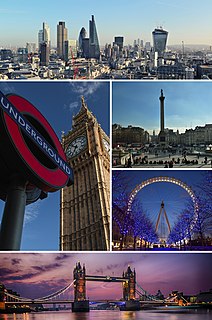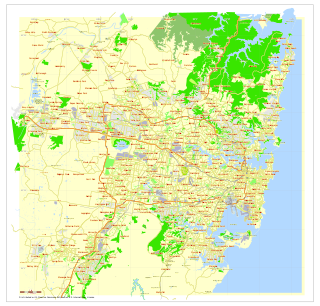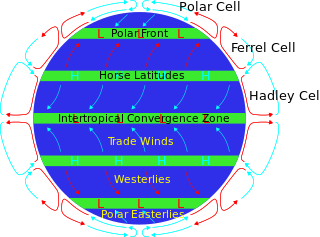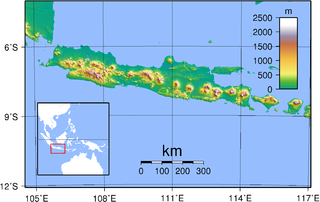Career
Under the command of William Doutty and surgeon J. Patterson, she left London, England, on 29 June 1828, and arrived in Sydney on 18 November. [2] She had embarked 158 male convicts and had eight deaths en route. [4] Seven of the eight deaths were due to dysentery. It appeared while Eliza was becalmed for a while in the Doldrums, and disappeared after she left the tropics. [5] [Note 1] Eliza departed Port Jackson on 19 March 1829 bound for London with produce. [7]

London is the capital and largest city of both England and the United Kingdom. Standing on the River Thames in the south-east of England, at the head of its 50-mile (80 km) estuary leading to the North Sea, London has been a major settlement for two millennia. Londinium was founded by the Romans. The City of London, London's ancient core − an area of just 1.12 square miles (2.9 km2) and colloquially known as the Square Mile − retains boundaries that follow closely its medieval limits. The City of Westminster is also an Inner London borough holding city status. Greater London is governed by the Mayor of London and the London Assembly.

Sydney is the state capital of New South Wales and the most populous city in Australia and Oceania. Located on Australia's east coast, the metropolis surrounds Port Jackson and extends about 70 km (43.5 mi) on its periphery towards the Blue Mountains to the west, Hawkesbury to the north, the Royal National Park to the south and Macarthur to the south-west. Sydney is made up of 658 suburbs, 40 local government areas and 15 contiguous regions. Residents of the city are known as "Sydneysiders". As of June 2017, Sydney's estimated metropolitan population was 5,230,330 and is home to approximately 65% of the state's population.

The doldrums is a colloquial expression derived from historical maritime usage, which refers to those parts of the Atlantic Ocean and the Pacific Ocean affected by a low-pressure area around the equator where the prevailing winds are calm. The doldrums are also noted for calm periods when the winds disappear altogether, trapping sailing ships for periods of days or weeks. The term appears to have arisen in the eighteenth century, when trans-equator sailing voyages became more common. Since this zone is where two trade winds meet, it is also called the Intertropical Convergence Zone. They roughly lie between latitudes 5° north and south.
On her second convict voyage Eliza was under the command of William Doutty and surgeon David Thompson. She left London on 7 November 1829, arrived in Hobart Town on 24 February 1830. [8] She had embarked 117 female convicts and had two deaths en route. [9] Eliza departed Hobart Town in June 1830, bound for Singapore.

Singapore, officially the Republic of Singapore, is an island city-state in Southeast Asia. It lies one degree north of the equator, at the southern tip of the Malay Peninsula, with Indonesia's Riau Islands to the south and Peninsular Malaysia to the north. Singapore's territory consists of one main island along with 62 other islets. Since independence, extensive land reclamation has increased its total size by 23%. The country is known for its transition from a developing to a developed one in a single generation under the leadership of its founder Lee Kuan Yew.
Guildford was a two-decker merchant ship launched in 1810. She transported convicts to New South Wales. Of her eight voyages delivering convicts, for three she was under charter to the British East India Company (EIC). She underwent major repairs in 1819, her hull was sheathed in copper in 1822; in 1825 she received new wales, top sides and deck, the copper was repaired and other repairs. Guildford was lost without a trace in 1831.
Dunvegan Castle was a merchant ship built at Chittagong in 1819. She made two voyages transporting convicts from England and Ireland to Australia. She also transported troops at least twice, once to Burma (1824) and once to Spain (1835). She was lost in 1837.
Caroline was built at Cochin, British India, in 1825. She made one voyage transporting convicts from Ireland to Australia. She was last listed in 1851.

Waterloo was a merchant ship built at Bristol, England in 1815. On her first voyage she suffered a short-lived mutiny. She then made one voyage under charter to the British East India Company (EIC). She made four voyages transporting convicts from England to Australia, and two voyages from Ireland to Australia. On her seventh convict voyage Waterloo wrecked on 28 August 1842 in Table Bay with great loss of life.
Royal Admiral was a 414-ton timber three-masted barque, built at King's Lynn, England in 1828 and used as a merchant ship. Royal Admiral first served for trade to India. She subsequently sailed to Australia on four occasions carrying convicts, from Portsmouth to Port Jackson in 1830, from Dublin to Port Jackson in 1833 and 1834, and from Woolwich to Hobart Town in 1842.
Recovery was a merchant ship built at Batavia in 1799 and taken in prize c.1811. She made two voyages transporting convicts from England to Australia and one voyage from Ireland to Australia. She also made two voyages for the British East India Company (EIC). She was last listed in 1847.
Fanny was a merchant ship built at Calcutta, British India, in 1829. She made one voyage transporting convicts from England to Australia. She was still sailing in 1839.
Clyde was a merchant ship built at Greenock, Scotland in 1820. She made two voyages for the British East India Company (EIC). She then made three voyages transporting convicts from England and Ireland to Australia. She was last listed in 1845.
City of Edinburgh was a merchant ship built at Bengal in 1813. She transferred to British registry and sailed between Britain and India. She made two voyages transporting convicts from Ireland to Australia. Later, she made a whaling voyage to New Zealand. She was wrecked in 1840.
Earl St. Vincent was a merchant ship built at Topsham, England in 1800. Between 1818 and 1823 she made three voyages transporting convicts from England and Ireland to Australia.
Edward was built at Bristol, England, in 1806. She was a West Indiaman until from 1829she made two voyages transporting convicts from Ireland to Australia. She was last listed in 1841, sailing between London and Madras.
Elizabeth was a merchant ship built at Calcutta, British India, in 1816. She made one voyage transporting convicts from Ireland to Australia. She also made one voyage for the British East India Company (EIC). This was the last voyage that any vessel made for the EIC. Elizabeth is no longer listed after 1834.
Eliza was a merchant ship built in British India, probably in 1804. Between 1819 and 1831 she made five voyages transporting convicts from England and Ireland to Australia. In between, she also made one voyage for the British East India Company (EIC). Her crew abandoned her at sea in 1836 as she was leaking uncontrollably.
Gilmore, was a merchant ship built at Sulkea, opposite Calcutta, British India, in 1824. In 1829-30 she made a voyage delivering settlers to the Swan River Colony in Western Australia. She then made two voyages transporting convicts from England to Tasmania.

Isabella was a merchant ship built on the Thames, England, and launched in 1818. She made six voyages transporting convicts from England and Ireland to Australia. In between, she made one round trip to China for the British East India Company (EIC). From her launch to 1834 she was a Licensed Ship; that is, she traded with India and the Far East under a license from the EIC. From 1848 on served in the North America trade. She is last listed in 1850.
Hooghly was a full-rigged merchant ship built on the Thames, England, and launched in 1819. She made two voyages under charter to the British East India Company (EIC), four voyages transporting convicts from England and Ireland to Australia, as well as voyages transporting emigrants to South Australia between 1839-1856. Around 1858 she was re-rigged as a barque. She sank off Algiers in 1863.
York was a sailing ship built in 1819 at Southwick. She made one voyage to Bombay for the British East India Company (EIC) in 1820. She made three voyages transporting convicts to Australia between 1829 and 1832. She was condemned and sold for breaking up in 1833 at Mauritius.
James Pattison was a merchant sailing ship built in 1828 upon the River Thames, England. She made one voyage for the British East India Company (EIC), and two transporting convicts to New South Wales. She also carried immigrants. She burnt to the waterline after her cargo ignited en route from Sydney to England in 1840.
Maitland was launched at Calcutta in 1811. She made four voyages for the British East India Company (EIC) between 1812 and 1830. she also made three voyages transporting convicts to Australia between 1840 and 1846. Thereafter she traded widely before she was wrecked c.1869.
Susan was launched at Calcutta in 1813. She initially traded in the East Indies as a country ship, and with Britain under license from the British East India Company (EIC). Between 1829 and 1831 she made two voyages for the EIC. Then between 1834 and 1836 she made four voyages transporting convicts, two to New South Wales, and two to Tasmania. She foundered in 1846 as she was sailing between London and the Cape of Good Hope.








